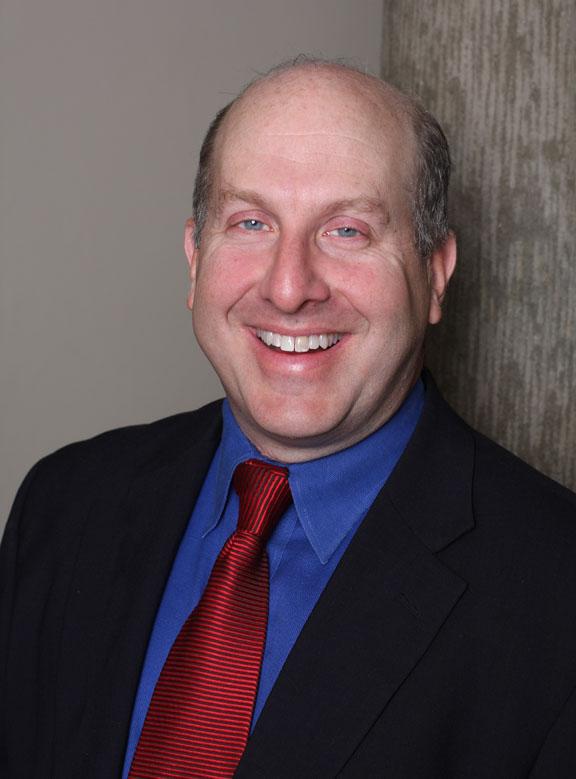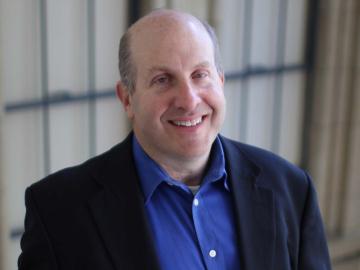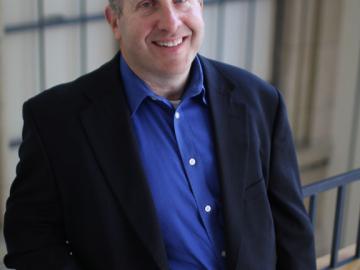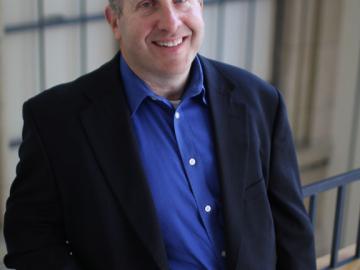Campus News
Affordability of Higher Education
April 30, 2015
Marvin Krislov

One of the most difficult issues confronting American institutions of higher education is affordability.
In this column, I share some thoughts about that issue in general, Oberlin’s tuition situation in particular, and the recent concerns expressed publicly by some students opposing the tuition increase planned for the 2015/2016 academic year.
I understand the strong reaction many students have to tuition increases. I share that concern. So do my faculty and staff colleagues and Oberlin parents and alumni.
We see the students’ reactions to the increase as part of an important and ongoing discussion at Oberlin about our priorities and the complicated issue of affordability and of the high tuition/high financial aid model of residential liberal arts education that Oberlin—and many other colleges—follows. A similar discussion is taking place in our Strategic Planning Steering Committee. We have included students in these discussions because their voices are important and will be heard.
Our hope is that, by thinking and working together as a community, we can find solutions to the cost issue. Members of the senior staff and I are meeting with student leaders to discuss the reasons for the tuition increase. Those conversations have included a broader discussion of Oberlin’s finances and budget. We will continue to talk with students, faculty, staff, and parents about the tuition increase and our financial situation.
To be clear, we will also be increasing our financial aid budget in the coming fiscal year to ensure that we meet the needs of our students. Students with specific concerns should speak with the Office of Financial Aid.
Next week in this column, I will have an in-depth, question-and-answer session on that subject with Mike Frandsen, vice president for finance and administration.
All of us are deeply concerned about the rising cost of an Oberlin education. But rising costs are not unique to Oberlin. Average college tuition in the United States has more than doubled in the past two decades, and that’s after adjustment for inflation. That rate of increase clearly isn’t sustainable in the long term if we want all qualified students to have access to higher education.
There are many reasons for this increase—some obvious, some less so. Just about everything costs more than it did 20 years ago. On top of that inflation, Oberlin College and Conservatory—like the other top-ranked, private, residential liberal arts institutions and conservatories with which we compete—face cost pressures from the growing demand for student support services, health care, faculty and staff salaries and benefits, plant and equipment, logistical support, and financial aid. For example, recruiting a talented, diverse student body, hiring the best teachers and scholars we can find, providing expanded mental health services, upgrading our residence halls, and offering competitive salaries to faculty and staff all come at considerable cost.
Oberlin is devoted to enabling our students and faculty to achieve academic, artistic, and musical excellence. And we seek to do that while maintaining the highest standards of access, inclusion and diversity. We also provide more than $60 million a year in financial aid and are committed to meeting the demonstrated financial need of our students. We are also working to increase the number of Pell Grant-eligible students at Oberlin.
Those goals are not mutually exclusive. But pursuing those goals costs a great deal of money. That is why we’ve been working so hard on our comprehensive fundraising campaign, Oberlin Illuminate, where raising money for scholarships is our top priority.
We are raising tuition for the coming academic year in order to provide some of the resources necessary to sustain the excellent, residential educational experience Oberlin provides. The tuition increase is a reflection of the resources we need to meet our financial commitments and obligations. It is also based on our knowledge of the private, residential higher education marketplace.
Oberlin is a 501(c)(3) nonprofit organization. This affects our ability to generate revenue. Because our endowment—currently just over $800 million—is much smaller than the endowments of many of our peer schools, it provided less annual revenue to our operations. Because of that, we are much more dependent on tuition revenue than many of our competitors.
If we do not raise tuition, we probably could not replace the revenue we would lose in the short-term and probably not completely in the long-run. We have been working and continue to work on generating revenue from sources other than tuition, including fundraising, bringing conferences and summer programs to campus, and through partnerships with other institutions.
But to make up a budget shortfall, we would have to reduce costs. Some reductions could be realized through greater efficiencies, and we are working on that. But we are already fairly efficient. So at some point reductions are likely to result in a degradation of the quantity or quality of the education and support services we currently offer.
In other words, the alternative to raising revenue is cutting costs. That could mean cutting or reducing some combination of programs, personnel, and operating costs. Doing so could certainly affect the quality of the education Oberlin’s provides, our ability to attract and retain a diverse student body from across the socio-economic spectrum, and our reputation as one of the world’s great liberal arts colleges and conservatories.
But the current course of endless tuition increases is clearly not sustainable. So we are going to have to make difficult, strategic decisions about what can be cut from our budget.
Which brings me back to the ongoing discussions we are having at Oberlin about priorities and cost. Balancing needs and priorities is complicated. Oberlin’s leadership hears the needs of our students and tries to meet them. But we cannot afford to create a structural deficit in the budget that will damage Oberlin’s near-term financial health and long-term viability as a top college and conservatory.
I don’t have an easy answer for bending the cost curve of an Oberlin education and American higher education. But by working together and having these discussions, we are taking important steps toward finding solutions. This is why our Strategic Planning process is so important.
Office of Equity, Diversity, and Inclusion Title IX Prevention Fellowship
The Office of Equity, Diversity, and Inclusion invites applications from recent Oberlin graduates for its Title IX Prevention Fellowship. This is an entry-level appointment. The position is a full-time, 12-month Administrative and Professional Staff position reporting to the Title IX Coordinator. It will provide the successful candidate with valuable hands-on experience in many aspects of gender harassment and sexual violence prevention in higher education.
Know any graduating Obies? We're looking for a fellow to work on sexual violence and gender harassment prevention, especially to support our amazing peer education program. Spread the word!
Senior Symposium
The Senior Symposium held on Friday, April 24, was an impressive event. This was the sixth annual celebration of the independent research and creative undertakings of our students. The opportunity to pursue independent projects in a wide array of disciplines is one of the hallmarks of an Oberlin education. This year, more than 60 seniors presented their work, and dozens more will be displaying or performing their work in venues across campus in the weeks ahead. Congratulations to all the participants and to their faculty and staff advisors and mentors on the outstanding work!
Ecolympics
Ecolympics, our annual campus-wide competition to reduce energy and water consumption, ends today, April 30. The competition is part of the Campus Conservation Nationals, a water and electricity reduction competition for colleges and universities throughout North America. I’m looking forward to finding out this year’s leaders in reducing energy and water consumption.
Women’s Lacrosse
Congratulations to Oberlin’s women’s lacrosse team on an excellent season and its huge victory on Wednesday night over top-seeded Wittenberg University in the first round of the North Coast Athletics Conference (NCAC) tournament. The team finished the regular season with 10 wins and five losses, including three one-goal defeats to North Coast Athletics Conference rivals. The team was four and four in the NCAC, qualifying for the conference tournament for the first time in 15 years.
In the championship game this coming Saturday, the Yeowomen will take on third-seeded Denision University in Granville, Ohio, at 1 p.m.
Kudos to all the players and Coach Lynda McCandlish and her assistants, Kara Concheck and Pamela Jenkins. Best of luck in the finals. Go Yeo!
Tags:
You may also like…
Thank you, Oberlin
June 22, 2017
It is hard to believe this will be my final "President’s Desk" column. But in August, I will become president of Pace University in New York. It has been an honor and a privilege to serve as your president.
Remembering Jonathan Demme
May 5, 2017
I’ve been thinking a lot about Oberlin parents and families since I received the sad news last week that Jonathan Demme, the brilliant film director, had passed away. Although Oberlin isn’t his alma mater, Jonathan really came to appreciate the College, Conservatory, and our community. His visits always seemed to energize him, and he became a stalwart supporter of our cinema studies program and the Apollo Outreach Initiative, which offers filmmaking classes to local school kids.
Response to Proposed Federal Budget Cuts
March 31, 2017
The budget proposals being put forward by the Trump administration are deeply troubling in many ways for our society and for American higher education, especially for liberal arts institutions such as Oberlin. The proposed cuts in discretionary spending are contrary to our values of access and inclusion, and our commitment to scientific research, the arts, and the humanities.


